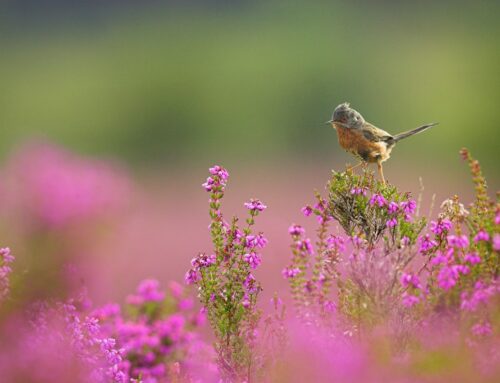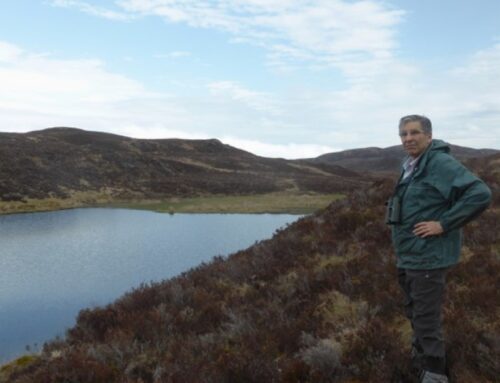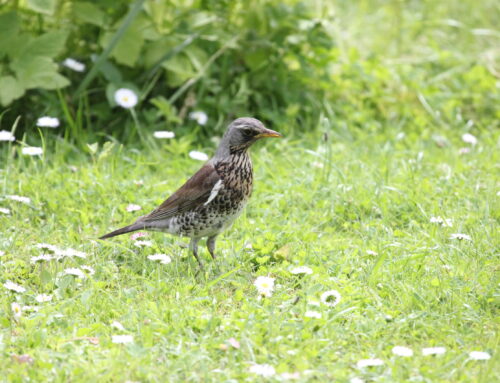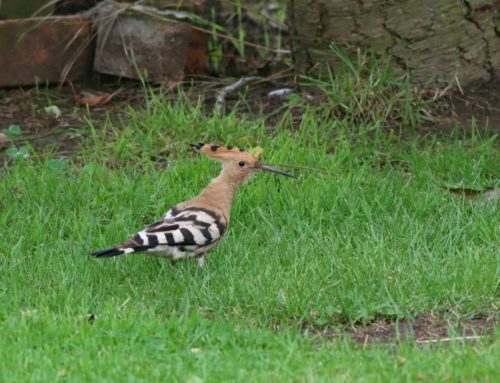What to look for: February
The first in a monthly series of blogs giving tips on finding and recording rare breeding birds.
Most birdwatchers will be still firmly in winter birding mode in February – after all, summer migrants have yet to start returning, our wintering waterbirds remain the most obvious feature of most birding trips and it’s (mostly) still cold! But a surprising number of bird species may already be showing signs of breeding behaviour, or in the case of few species such as Raven Corvus corax and Crossbills Loxia sp. may be getting right down to breeding. There are a few rare breeding birds for which February can be an excellent time to detect the first signs of breeding – in some instances detecting the presence of birds may be far easier in this early part of their breeding season than later on. Here’s a few tips on what to look for.

Golden Eagle, by Ian Francis
Golden Eagle Aquila chrysaetos. Golden Eagles are early breeders, and egg-laying can commence in early March. Resident pairs will display over home ranges between January and March, so this is a key period for checking occupancy. On sunny days birds may be up displaying or engaging with territorial disputes.
Goshawk Accipiter gentilis. For such a powerful predator, Goshawks can be remarkably inconspicuous. The most obvious exception to this is during spring display, which can start as early as February and continue through March into early April. Both males and females will display over woodland breeding sites, sky-dancing including high circling flights, undulations, a slow flight with exaggerated flaps, and sudden plunges – this can be quite spectacular. Such behaviour is most often seen in fine weather, and mornings are best. If displaying birds are found, repeat visits to a site later in the spring and into the summer may provide more breeding evidence and eventually (from July onwards) possibly fledged young.

Long-eared Owl, by Jack Bucknell
Long-eared Owl Asio otus. Long-eared Owls can be a remarkably elusive species, and the species is one of the most under-reported on the RBBP’s list. They can be far more obvious when they have chicks in the nest, or after fledging, as the chicks make a persistent and far-carrying begging call. However, relying on this period for recording this species means that pairs that fail to breed (which can be a high proportion of the population in years of poor food supply) will be missed. Male Long-eared Owls call from February onwards, with the period around or shortly after dusk being the best time to listen for their gentle but steady hooting, or if lucky to observe wing-clapping display flights.
Long-eared Owls can utilise a wide range of wood and scrub habitats, but are particularly keen on areas of small woodland – often scrub thickets of coniferous shelterbelts – adjacent to open country with wet heathland, rough pasture or marshes.
Lesser Spotted Woodpecker Dendrocopos minor. Small, quiet and inconspicuous, Lesser Spotted Woodpeckers can be extremely difficult to find while breeding, particularly as they stick to treetops and roam large territories. So the very best time to look is before the onset of breeding, in February and March, when 1) they are more vocal, 2) they drum to advertise territories, and 3) easier to see in leafless trees. Even then, they may take a lot of effort to find, with repeated early morning visits to suitable woodlands required. They can be found in a range of woodlands in the southern half of Britain, but are more abundant in well-wooded areas, and in woods with high levels of dead wood, and/or wet areas. More advice on finding Lesser Spotted Woodpeckers can be found on the Woodpecker network website.

Woodlark, by Andy Hay (RSPB Images)
Woodlark Lullala arborea. Woodlark will begin song-flighting in late winter, and formal monitoring guidelines suggest site visits from mid-February onwards. Like most songbirds they are more vocal in the morning, and on calm days the beautiful fluty song can be heard from a considerable distance. While populations on heathland and forestry sites may be well monitored in some counties, the species can be well if thinly dispersed across farmland habitats where they are more likely to be missed. The last national survey, in 2006, found that farmland was a particularly important habitat in southwest England (Devon), although it may be that the loss of set-aside since that date has reduced the availability of suitable habitat.
We will continue this series monthly through the breeding season, giving tips of how you can help improve rare breeding bird monitoring where you live. Of course, if you do find any of the species above, or others on the RBBP’s species list, showing breeding behaviour it is vital you submit the record to the local bird recorder (see the list here) with details on species, numbers, breeding evidence observed, and precise location details. The recorder will then be able to include this data in their annual submission to the RBBP. Most recorders will use data submitted through the BTO/RSPB/BI/WOS/SOC BirdTrack portal, so this may be a convenient way to submit records.






